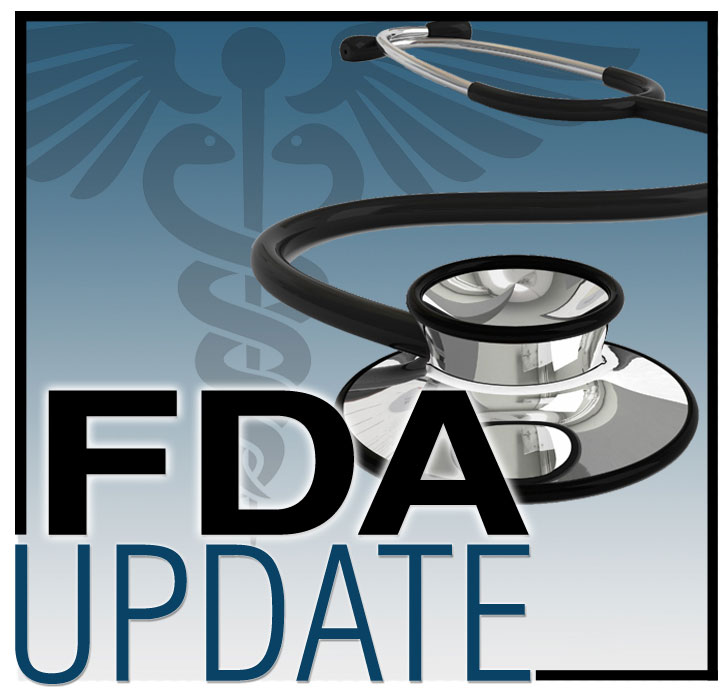
On March 8, 2019, the U.S. Food and Drug Administration (FDA) granted accelerated approval to atezolizumab (Tecentriq®) in combination with paclitaxel protein-bound for adult patients with unresectable locally advanced or metastatic triple-negative breast cancer (TNBC) whose tumors express PD-L1 (PD-L1 stained tumor-infiltrating immune cells [IC] of any intensity covering ≥ 1% of the tumor area), as determined by an FDA-approved test.
FDA also approved the VENTANA PD-L1 (SP142) Assay as a companion diagnostic device for selecting TNBC patients for atezolizumab.
Approval was based on IMpassion130 (NCT02425891), a multicenter, international, double-blinded, placebo-controlled, randomized trial that included 902 patients with unresectable locally advanced or metastatic TNBC who had not received prior chemotherapy for metastatic disease. Patients were randomized (1:1) to receive either atezolizumab (840 mg) or placebo IV infusions on days one and 15 of every 28-day cycle, plus paclitaxel protein-bound (100 mg/m2) administered via IV infusion on days one, eight, and 15 of every 28-day cycle.
Tumor specimens (archival or fresh) were evaluated prospectively using the VENTANA PD-L1 (SP142) Assay at a central laboratory and the results were used as a stratification factor for randomization and to define the PD-L1 positive population for pre-specified analyses.
In patients whose tumors express PD-L1, median progression-free survival (PFS) was 7.4 months (6.6, 9.2) for patients receiving atezolizumab with paclitaxel protein-bound and 4.8 months (3.8, 5.5) for those receiving placebo with paclitaxel protein-bound. The stratified hazard ratio for PFS was 0.60 (95% CI = 0.48, 0.77; p < 0.0001) in favor of the atezolizumab plus paclitaxel protein-bound arm. Objective response rate (ORR) in patients with confirmed responses was 53% compared to 33% for the atezolizumab and the placebo-containing arms, respectively. Overall survival data were immature with 43% deaths in the intent to treat (ITT) population.
The most common adverse reactions (reported in ≥ 20% of patients) with atezolizumab with paclitaxel protein-bound were alopecia, peripheral neuropathies, fatigue, nausea, diarrhea, anemia, constipation, cough, headache, neutropenia, vomiting, and decreased appetite.
This indication is approved under accelerated approval based on progression-free survival. Continued approval for this indication may be contingent upon verification and description of clinical benefit in a confirmatory trial(s).
The recommended atezolizumab dose for patients with TNBC whose tumors express PD-L1 is 840 mg administered as an IV infusion over 60 minutes, followed by 100 mg/m2 paclitaxel protein-bound. For each 28-day cycle, atezolizumab is administered on days 1 and 15, and paclitaxel protein-bound is administered on days 1, 8, and 15 until disease progression or unacceptable toxicity.
View full prescribing information for atezolizumab.
FDA granted this application priority review. A description of FDA expedited programs is in the Guidance for Industry: Expedited Programs for Serious Conditions-Drugs and Biologics.
Healthcare professionals should report all serious adverse events suspected to be associated with the use of any medicine and device to FDA’s MedWatch Reporting System or by calling 800-FDA-1088.
In collaboration with the FDA and as a service to our members, ONS provides updates on recent FDA approvals and other important FDA actions (e.g., updated safety information, new prescribing information) pertaining to therapies for patients with cancer. This allows the agency to inform oncologists and professionals in oncology-related fields in a timely manner. Included in the FDA updates is a link to the product label or to other sites for additional relevant clinical information. In supplying this information, ONS does not endorse any product or therapy and does not take any position on the safety or efficacy of the product or therapy described.





